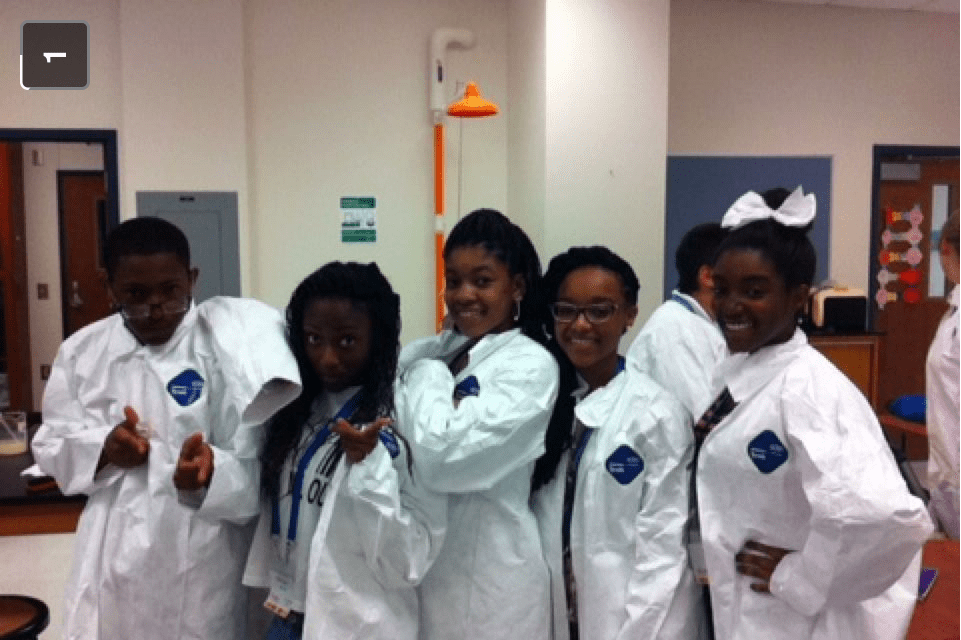Take a moment, locate a piece of paper, and then draw whatever comes to mind when you think of a scientist. Go ahead… I'll wait.

Take a look at what you drew. Did you envision a man or a woman? What race or ethnicity are they? Did you draw a mad scientist like Dr. Frankenstein? Or did you picture a nerdy and introverted type like Sheldon from The Big Bang Theory?
A couple stereotypical images of scientists (or legos dressed up like scientists).
What you drew probably depended on your background, familiarity, and interest in science, which are different for each individual. When asked to think about scientists, I traditionally think of Mendel, Darwin, Newton, Tesla, and Franklin among other old, historic figures. However, for thousands of years, people from all different backgrounds and walks of life have contributed to the growing body of knowledge we call science – not just those white men I named above. Science as a discipline has certainly diversified over time, and yet, when asked to draw a scientist, students like Amy and Andrea typically draw a white man in a lab coat.
The Stereotypical Scientist
If we perceive scientists as white men in lab coats, is that stereotype harmful? In some ways this stereotype in certain scientific fields is not that far from the truth. In 2012, 11.2% of bachelor's degrees in science and engineering and 4.1% of doctorate degrees in science and engineering were awarded to minority women. In 2013, 70% of workers in science and engineering occupations were white, while Hispanics, blacks, and American Indians/Alaska Natives made up only 11% of the science and engineering workforce. Female scientists and engineers are also concentrated in different occupations than men, with relatively high shares of women in the social sciences (62%) and biological life sciences (48%) and relatively low shares in engineering (15%) and computer and mathematical sciences (25%). However, while many Science, Technology, Engineering and Mathematics (STEM) fields appear to be teeming with white males, there ARE scientists out there who do not fit into that narrow mould. So, this stereotypical image of a scientist as a white man in a lab coat is not a true representation of who actually does science.
Representations of Scientists in the Classroom
Portraying low diversity in the sciences is particularly harmful because of its potential to quell student aspirations into STEM fields. While preparing for my first year as a middle school science teacher, I became acutely aware of this lack of diversity in my own mental images of scientists. Most scientists we discussed in school were white, straight men who looked nothing like my students (or myself for that matter). There was a disproportionately low number of scientists from underrepresented groups and backgrounds in my students' textbooks, if at all.
As an educator, I wanted to put my students on a clear trajectory towards success and increased interest in STEM, but I was grappling with how my students were supposed to see themselves as scientists if they did not have role models with whom they identified. I specifically remember one of my 8th graders asking me why we were learning about “all these old, white dudes†like Copernicus during our astronomy unit. Even the posters that hung on my wall, like the one of Einstein I lovingly bequeathed to my classroom from my college dorm, sent a message to my students about who does STEM. For some of my students, looking up at Einstein's white, male face sent a message of “you are not like me, and you never will be.†Reinforced stereotypes like this have the potential to reduce interest in STEM fields among students who don't identify with those images.

Why does this scientist stereotype matter? I believe we have a moral obligation to give everyone from all backgrounds an equal opportunity to pursue STEM fields, and we can start by encouraging students from historically underrepresented groups to take an interest in STEM. If we fail at inspiring the next generation, just think of the amazing scientific discoveries that may never come to be!
Fortunately, I'm not alone in this belief. Scientists are conducting research to find ways to challenge scientist stereotypes in the classroom by providing counter examples. And while media often reinforces a narrow view of scientists, there are several movements put in place by members of the scientific community to combat these stereotypes and broaden the public's perception of who does science.
Has this post left you wanting to know more about some kick-ass scientists of now and yore who break the straight, white male scientist stereotype? If so, stay tuned for future posts in my This is What a Scientist Looks Like series here at ASO. Until then, here is one example of what scientists looks like to me:

About the author
 |
Stephanie M. Halmo is a former middle school science teacher turned graduate student, actively pursuing her Ph.D. in biochemistry from the University of Georgia. In her spare time she likes to dance, volunteer at local schools and tie-dye anything she can get her hands on. She is currently ASO’s News Editor. You can connect with Stephanie on Twitter and Instagram @shalmo or by email: shalmo27@uga. More from Stephanie M. Halmo. |
About the Author
- athenssciencecafehttps://athensscienceobserver.com/author/athenssciencecafe/April 17, 2020
- athenssciencecafehttps://athensscienceobserver.com/author/athenssciencecafe/April 12, 2020
- athenssciencecafehttps://athensscienceobserver.com/author/athenssciencecafe/April 3, 2020
- athenssciencecafehttps://athensscienceobserver.com/author/athenssciencecafe/March 30, 2020









